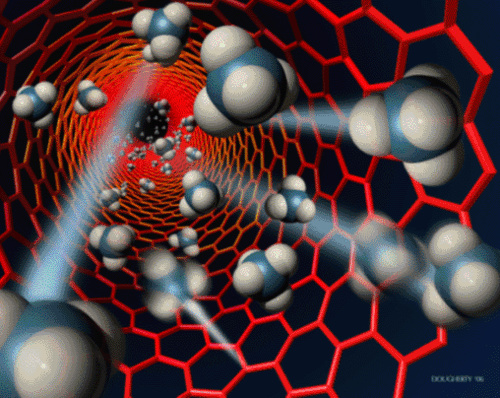Ever wonder what if current is conducting or flowing without any power outlets? Not talking about green energy. These two technologies we are talking about, will fundamentally change what we mean by “electricity” and wont use any usual power transmission lines for conducting.
Wireless Electricity
Companies like WiTriCity are developing ways to power up devices wirelessly from across a room. And you can already buy products like the Powerpad, a charger that powers up any device you set on top of it. Here is the founder of WiTriCity talking about his company’s technology a few months ago:
Wireless electricity could eliminate power outlets and electrical cords, significantly transforming our lived environments. Imagine a house without power outlets. Or a street without power lines. That time could be coming very soon.
Carbon Nanotube Thermopower
While wireless electricity might take wires out of electricity, “thermopower” would transform electrical wires into ultratiny nanotubes which can emit enormous amounts of energy.
Writing for MIT News, David Chandler explains:
The key ingredient in the recipe is carbon nanotubes – submicroscopic hollow tubes made of a chicken-wire-like lattice of carbon atoms. These tubes, just a few billionths of a meter (nanometers) in diameter, are part of a family of novel carbon molecules, including buckyballs and graphene sheets, that have been the subject of intensive worldwide research over the last two decades.
In the new experiments, each of these electrically and thermally conductive nanotubes was coated with a layer of a highly reactive fuel that can produce heat by decomposing. This fuel was then ignited at one end of the nanotube using either a laser beam or a high-voltage spark, and the result was a fast-moving thermal wave traveling along the length of the carbon nanotube like a flame speeding along the length of a lit fuse. Heat from the fuel goes into the nanotube where it travels thousands of times faster than in the fuel itself. As the heat feeds back to the fuel coating, a thermal wave is created that is guided along the nanotube. With a temperature of 3,000 kelvins, this ring of heat speads along the tube 10,000 times faster than the normal spread of this chemical reaction. The heating produced by that combustion, it turns out, also pushes electrons along the tube, creating a substantial electrical current . . .
After further development, the system now puts out energy, in proportion to its weight, about 100 times greater than an equivalent weight of lithium-ion battery . . . Because this is such a new discovery, [MIT chemical engineer Michael Strano] says, it’s hard to predict yet exactly what the practical applications will be. But he suggests that one possible application would be in enabling new kinds of ultra-small electronic devices – for example, a devices the size of grains of rice, perhaps a sensor or treatment device that could be injected into the body. Or it could lead to “environmental sensors that could be scattered like dust in the air,” he says.
In theory, he says, such devices could maintain their power indefinitely until used, unlike batteries whose charge leaks away gradually as they sit unused. And while the individual nanowires are tiny, Strano suggests that they could be made in large arrays in order to supply significant amounts of power for larger devices.
Thermopower could potentially eliminate batteries as we know them. It might also allow people to generate AC power with batteries, which currently emit only DC power.
Source: Nature Materials


